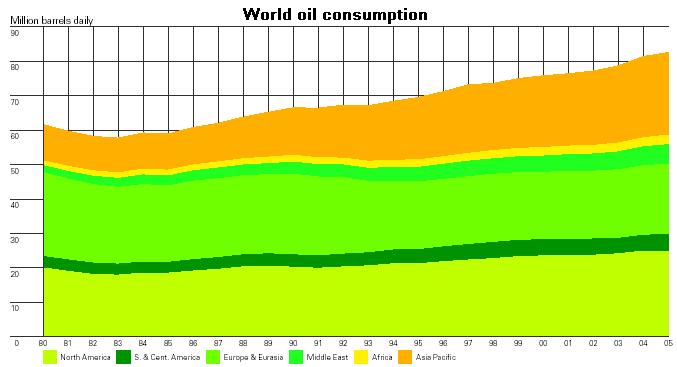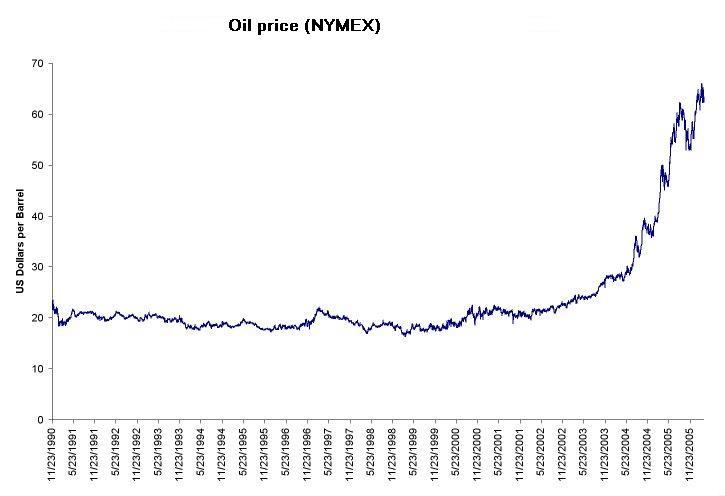ALTERNATIVE FUELS FOR TRANSPORTATION
|
ALTERNATIVE FUELS FOR TRANSPORTATION |
 Consumption
of fuels in transportation is steadily growing. The number of passenger
cars worldwide in 1985 was 375 million and there were another 109 million
commercial vehicles in that year. In 2002, the world's passenger car fleet
reached 530 million. A quarter of them driven in the USA, a country with five
percent of the world's population. It is estimated that there are approximately
600 million vehicles being driven on the streets today (2006). Alone in the year
2005, 63 million cars and light trucks were produced worldwide. It is assumed
that by 2020 there will be more than 1 billion cars on the streets.
Consumption
of fuels in transportation is steadily growing. The number of passenger
cars worldwide in 1985 was 375 million and there were another 109 million
commercial vehicles in that year. In 2002, the world's passenger car fleet
reached 530 million. A quarter of them driven in the USA, a country with five
percent of the world's population. It is estimated that there are approximately
600 million vehicles being driven on the streets today (2006). Alone in the year
2005, 63 million cars and light trucks were produced worldwide. It is assumed
that by 2020 there will be more than 1 billion cars on the streets.
Rising number of vehicles leads to a steady growing oil consumption in the world. As the oil production is becoming more and more costlier the oil price is increasing, and the situation is not expected to change in the future. The rapidly growing economies of China and India are projected to increase their consumption of oil dramatically in the coming decades as level of car ownership is rising. All that leads to the worldwide search for development of alternative fuels.


Price of oil on New York stock exchange. (Note: price was 74 USD per barrel in 2006).
Alternative
fuels are defined here as fuels which have its origin in renewable energy. There
are also other fuels, like liquid petroleum gas or natural gas with their fossil
fuel origin, which are in many countries considered as alternative to oil. They
are not covered here because development of fossil-based
sources can be considered only as a short-term solution. Another group of
alternative fuels represent electricity or hydrogen which can be produced
from fossil or renewable sources. Cars
using these types of energy including fuel cells are still in early development
stage and original energy used by them is mainly coming from fossil fuels
(production of electricity or hydrogen).
The need for the development of alternative fuels based on renewable sources is growing due to environmental concerns and fears that the production of oil will no longer be able to cover the demand. Such fuels are already available today (biofuels). In contrary to electricity or hydrogen (fuel cells) biofuels does not need large changes in infrastructure, engine equipment and can easily be accommodated by recent fleet of cars on the streets.
Biofuels have the potential to reduce greenhouse gas (carbon dioxide) emissions by almost 100 percent relative to oil based petroleum.
The controversy about the energy balance of biofuels (mainly ethanol) seems to be over now. There is a growing consensus that all biofuels (ethanol, biodiesel, biogas) contain more useful energy than is required to produce them. Energy output:input ratio in case of corn ethanol which was particularly controversial, now clearly exceeds one. All that as a result of improved energy efficiency in both agriculture and ethanol refining.
Another controversial issue are the subsidies to agricultural sector. It seems that the financial savings with biofuels from avoided oil imports can be huge. According to the experience from Brazil the savings between 1975 and 1987 reached 10,4 billion USD while the governmental spending on ethanol production costs 9 billion USD in subsidies. And the savings were even higher later - up to 60 billion USD between 1976–2004 for oil imports.European
Union adopted directive on the use of biofuels with the aim to reach
requirements of the Kyoto Protocol and to achieve greater energy security. The
directive sets a "reference value" for national targets of 2% in 2005
and 5,75% in 2010 (see the directive
text). Document named Strategy for Biofuels adopted by the EU in
February 2006 describes potential market-based, legislative, and research
measures to increase the use of biofuels. As the result of these efforts France
and Germany announced plans develop biodiesel and ethanol production so that the
target (5,75 % of biofuels) will be achieved before the deadline.
![]()